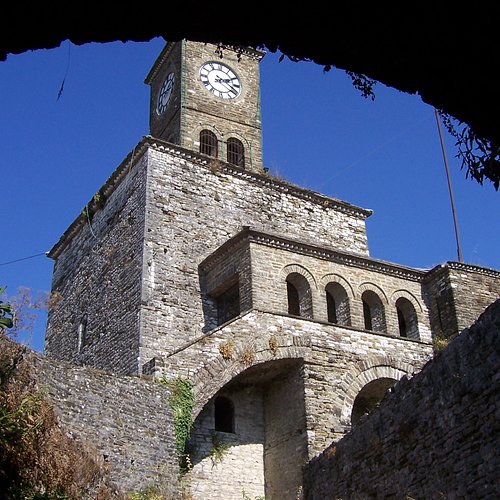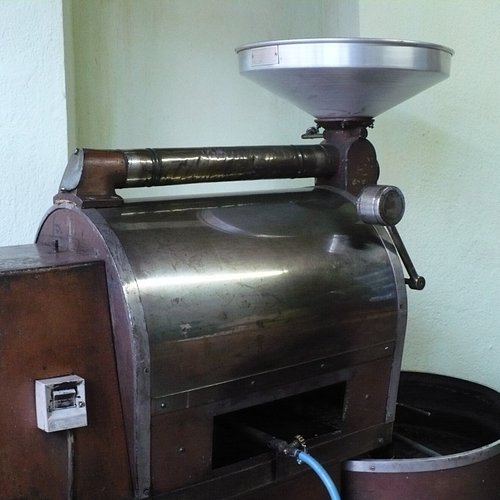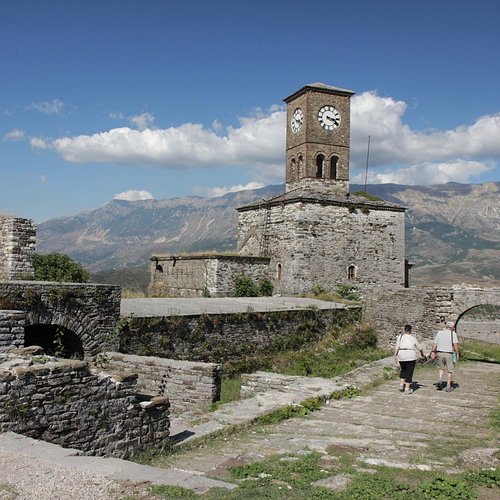Top 10 Sights & Landmarks in Gjirokaster, Gjirokaster County
Discover the best top things to do in Gjirokaster, Albania including Zekate House, Gjirokaster Castle, Skenduli House, Gjirokastra Bazaar, Antigonea Archaeological Park, Gjirokaster Mosque, The Cold War Tunnel, Ismail Kadare's House, Kisha Ungjillore Gjirokaster, Church of the Archangels, Varosh.
Restaurants in Gjirokaster
1. Zekate House
Overall Ratings
4.5 based on 161 reviews
One of the most beautiful and best preserved houses of Gjirokastra. The Zekate House is a grand example of the typical (tower-house), belonging to the wealthiest families in Gjirokastra in 19th century. It belonged to Beqir Zeko, a general administrator of Ali Pasha. It was built in 1811-1812. Where you are in the top of it, the view of river valley is amazing. This 3 storey house has very strong defensive features, and that is why she is still so powerful until nowadays. The ground floor contains storage rooms, the kitchen and the cistern. The first floor has two rooms used as living quarters for branches of the family, while the third floor has a grand reception room and two other smaller rooms. The principal room is very typical of the grandest of these dwellings with frescoed walls, a carved ceiling and an ornate fireplace. This house gives visitors a vast understandings of the vernacular architecture. The entrance fee is € 1.00.
Reviewed By nadiaresuli - Tirana, Albania
breathtaking wood decoration and wall painting. beautiful city view. it feels like you travel in time. highly recommend.
2. Gjirokaster Castle
Overall Ratings
4.5 based on 838 reviews
Reviewed By B1714D - Belgrade, Serbia
We've travelled entire Albania during our 2 week tour and two towns I can point out being the most beautiful are Berat and Gjirokaster. Gjirokaster is only an hour drive from the seaside resorts of Saranda and Ksamil, and I'd suggest everyone holidaying there to make a day excursion. Gjirokaster sits on slopes of Gjere mountains overlooking a huge valley. The Castle occupies a commanding position and is a beautiful site while approaching the town. The fortress dates back to 12 c, modified and reshaped over the centuries. It's main feature, the clock tower was added in 1800's by Ottoman governor Ali Pasha Tepelena who's also responsible for a magnificent sea fortress at Porto Palermo north from Saranda on the Ionian coast (read that review). The Castle houses a military museum consisting mostly of captured WWII Italian and German weapons and a US fighter plane from the cold war era (different versions on it), as well two Pasha tombs and some underground Ottoman era rooms. However, most impressing are the views of the valley and old town below. Like most such places in Albania entry fee is extremely cheap and there are good English explanations throughout the place.
3. Skenduli House
Overall Ratings
4.5 based on 267 reviews
If you really want to know the best model of local architecture in 19th century, a visit to Skenduli house is a must. Everything is totally original and is the most authentic building in Gjirokastra. This is the best preserved house in old city of Gjirokastra, more than 300 years old (built in 1823). The owner of the house, Nasip Skenduli, a descendant of the family that originally build the house, is an amazing story teller. He will explain you everything about the house and the preserving process in years. It used to be the original Ethnographic museum during communist time, but now the owners have their house back and keep it open for visitors. What makes this house so special? Its structure shows that this has been the richest houses in Gjirokastra, because it had 9 fireplaces, (more fireplaces more richer the family was); 6 bathrooms, 12 rooms, 44 doors, 64 windows, and 4 hamam (turkish bath). Many rooms are preserved in their original shape and this is amazing.
Reviewed By pharonl - San Jose, United States
We took a great guided tour of this wealthy families home from 100-200 years ago (I forget the actual age). What a different way of life! The home is not occupied now.
4. Gjirokastra Bazaar
Overall Ratings
4.0 based on 218 reviews
Reviewed By B1714D - Belgrade, Serbia
Gjirokaster bazar is set at foothill beneath the imposing Gjirokaster castle. It's a maze of winding cobbled streets going up and down. Entire area is packed with dozens of shops - some authentic selling Albanian hand crafts like rugs and clothing items, some ordinary touristic selling souvenirs. Anyway, it's a great and very picturesque area to stroll among Ottoman era architecture. Be sure to have a drink in one of many bars or to try the traditional pastry - byrek.
5. Antigonea Archaeological Park
6. Gjirokaster Mosque
Overall Ratings
3.5 based on 50 reviews
7. The Cold War Tunnel
Overall Ratings
3.5 based on 95 reviews
The Cold War Museum (also called the Color War Tunnel) is an underground bunker that served as an emergency shelter in the latter part of Albania’s communist era (1944-1990). This bunker, and the innumerable small bunkers found throughout the country, reflects the paranoia of Albanian’s communist dictator, Enver Hoxha. He feared a foreign invasion, especially after Albania’s breakup with Soviet Union in the early 1960s. Built in secret in the early 1970s, the bunker is 800 m long and has 59 rooms. Unlike Tirana’s bunker museum, Gjirokastër’s bunker has been left in its original state, making it less informative but much more atmospheric and genuine. This bunker was designed to accommodate many different functions in case of a nuclear attack. There are rooms for government ministries, local government, interrogators, and party elite, as well as places for sleeping, power generation, and water storage. Much of original furniture was looted from the site in 1990 but pieces still remain.
Reviewed By bj_rnerikl2018 - Oslo, Norway
We really enjoyed visiting the cold war tunnel. It all seemed very authentic, with lots of old furniture and equipment being left in the bunker.
8. Ismail Kadare's House
Overall Ratings
2.5 based on 6 reviews
The home of the world-famous Albanian writer, Ismail Kadare, has been turned into a museum, and is open to the public. This is where Ismail Kadare was born and spent his childhood. The house will be familiar to everyone who has read his book ‘Chronicle in Stone”, in which Kadare describes every corner of this house. As you visit the house you can imagine Kadare as a little boy, sitting close to the windows and witnessing the terrors of World War II. The house was first built in 1799, and classified as a Cultural Monument in 1991. Recently the building was repaired and rehabilitated under the auspices of UNESCO and Albanian’s Ministry of Culture. The Museum was opened to the public on 28 January 2018, on the occasion of Kadare’s 80th birthday. Kadare House is in the middle of the historical Palorto neighborhood and easy to find. Inside the house are some original objects belonging to the family. The entrance fee is 200 leke.








